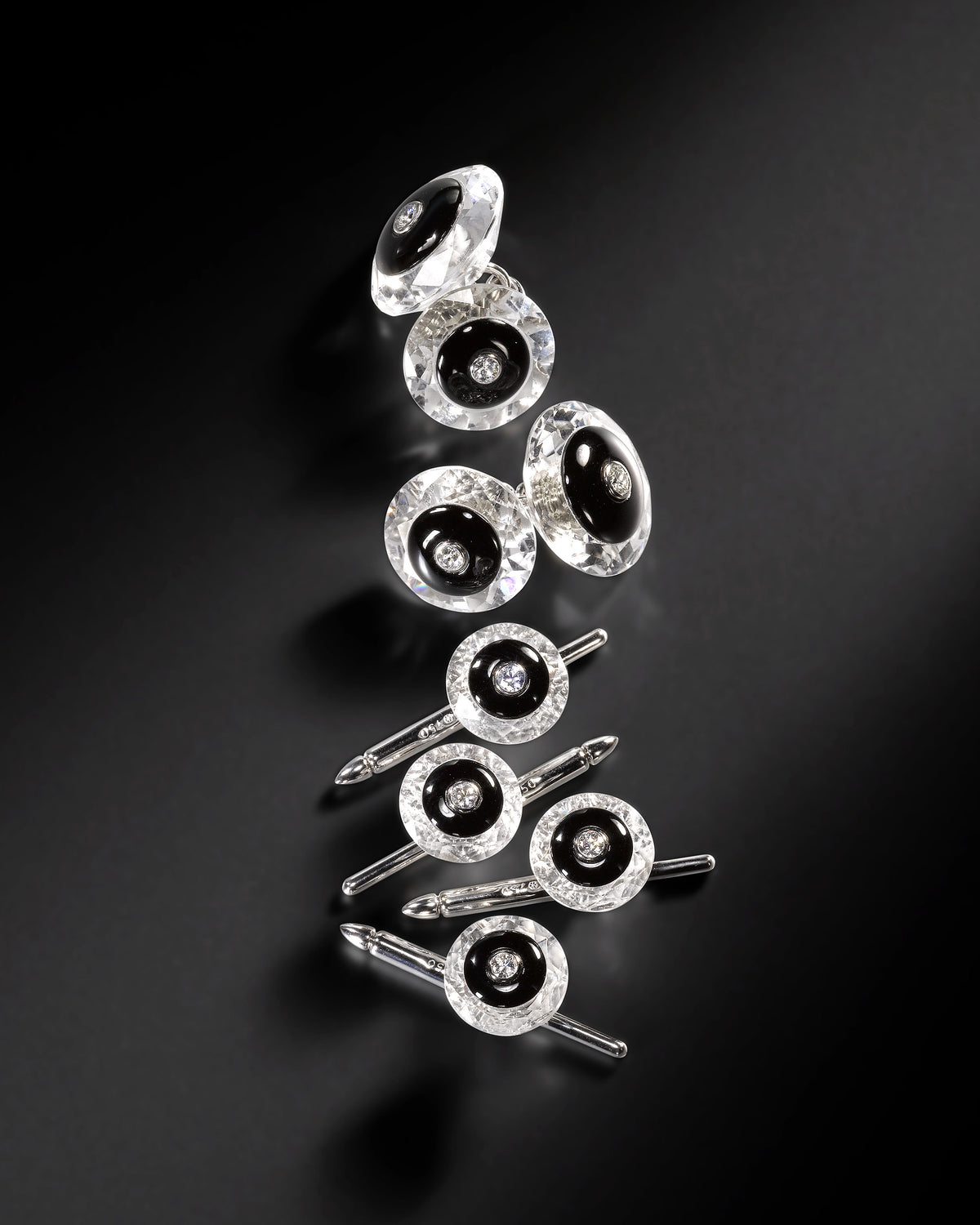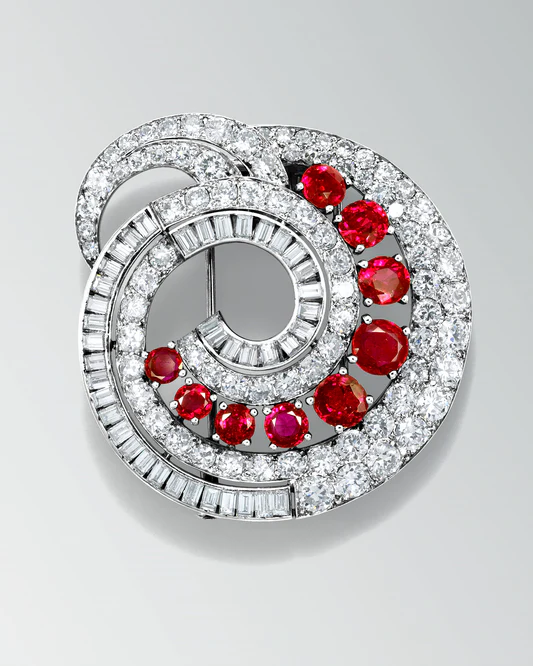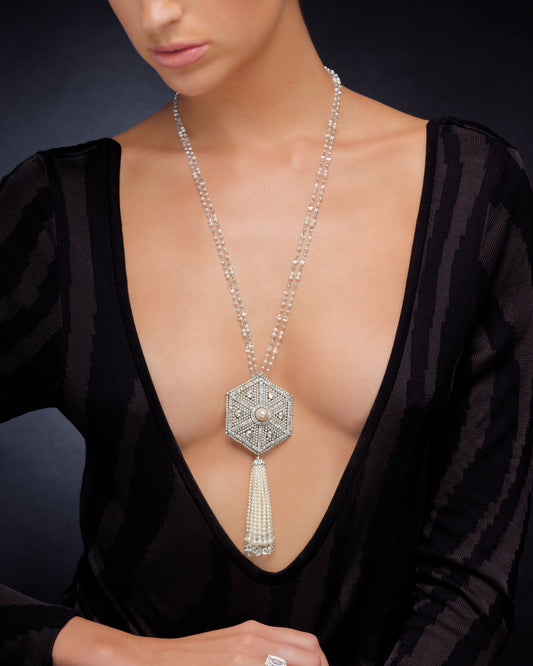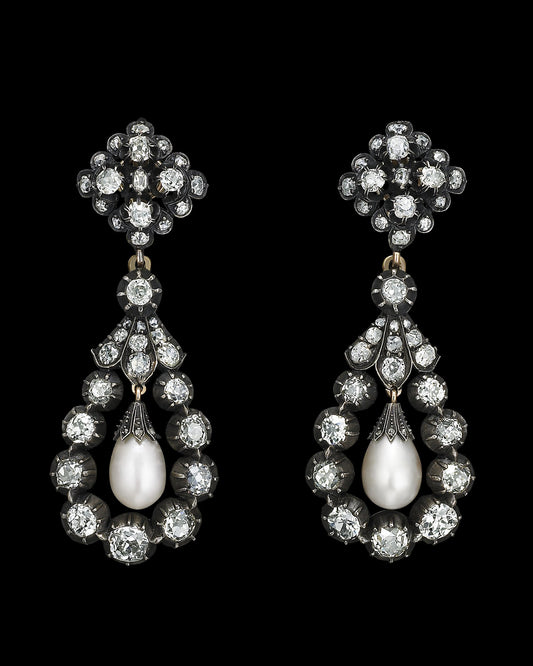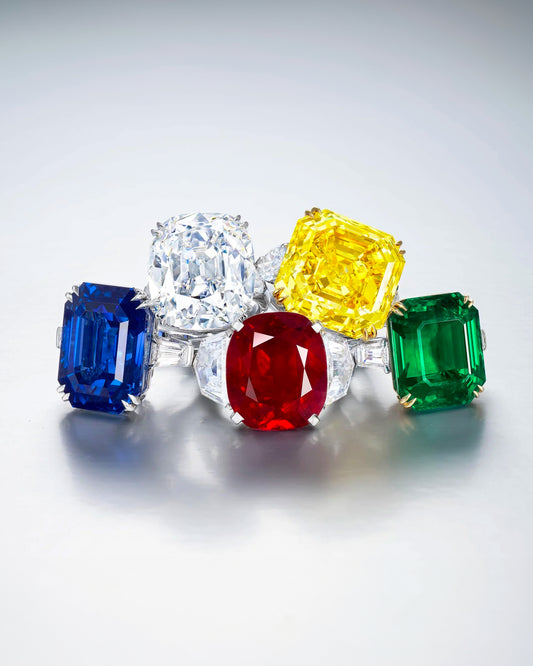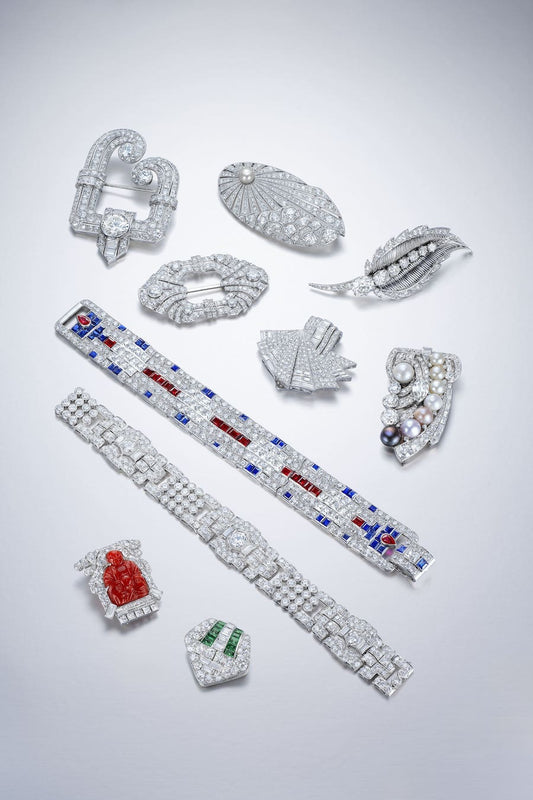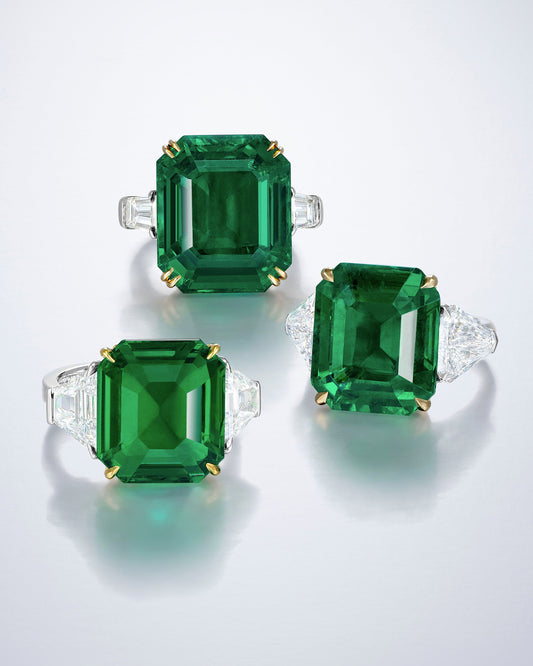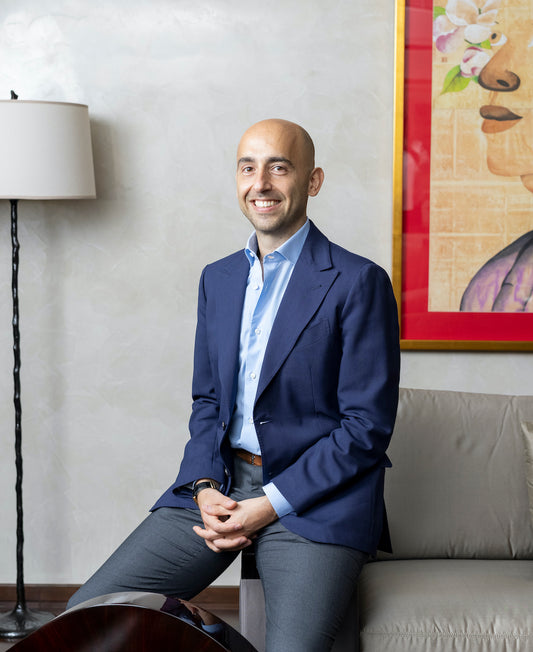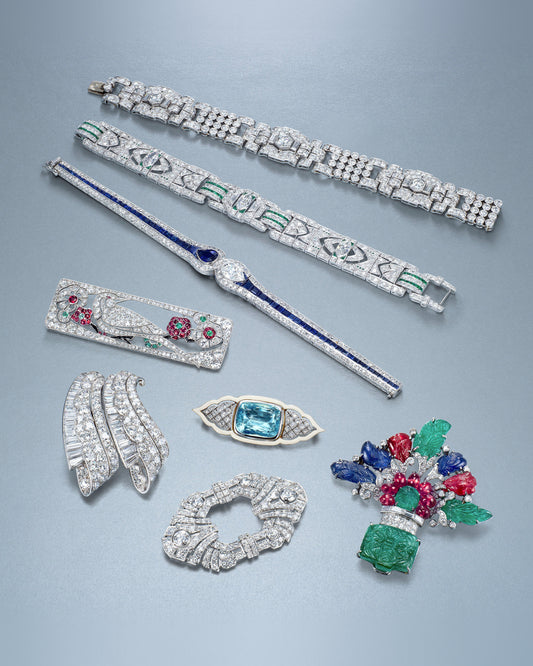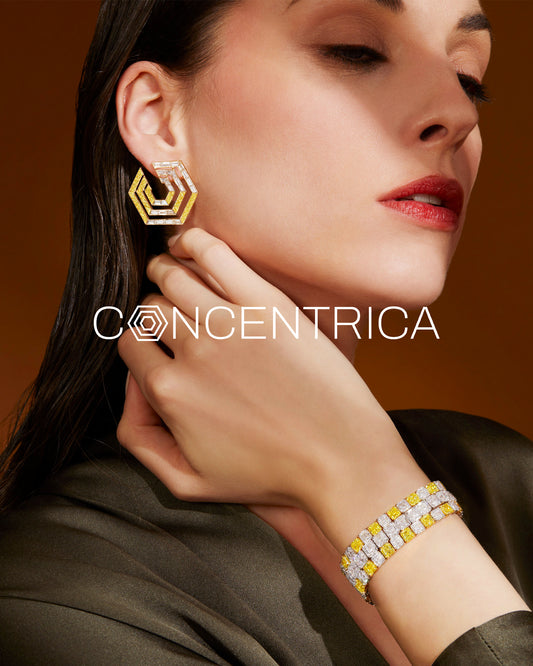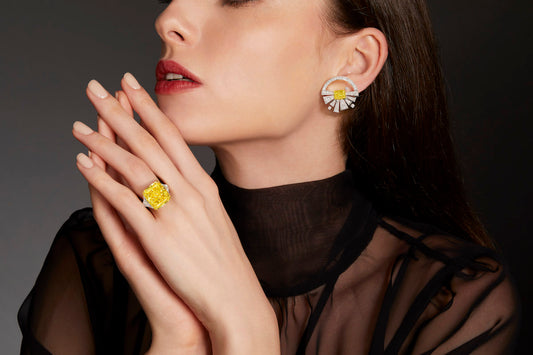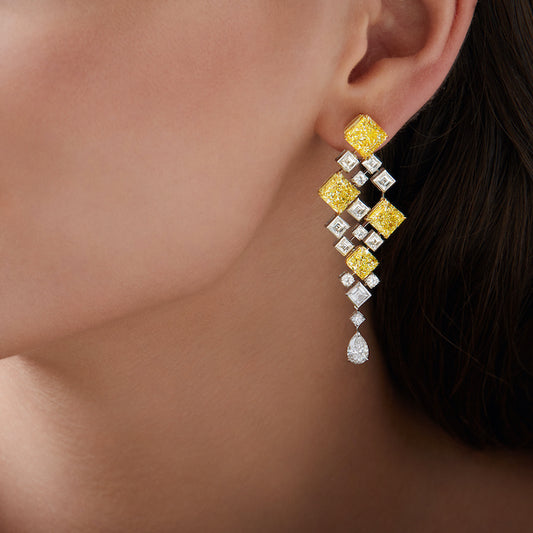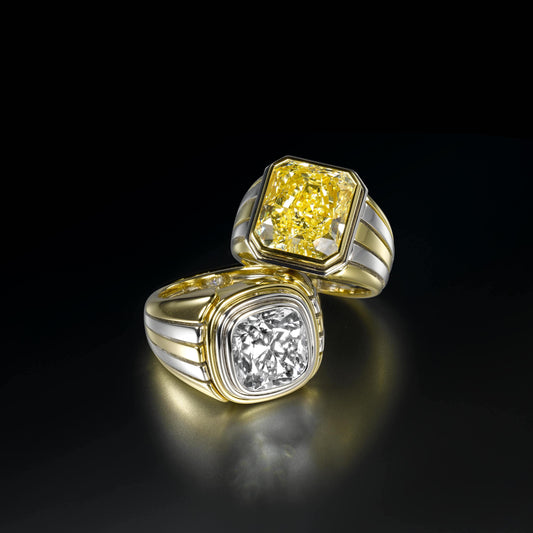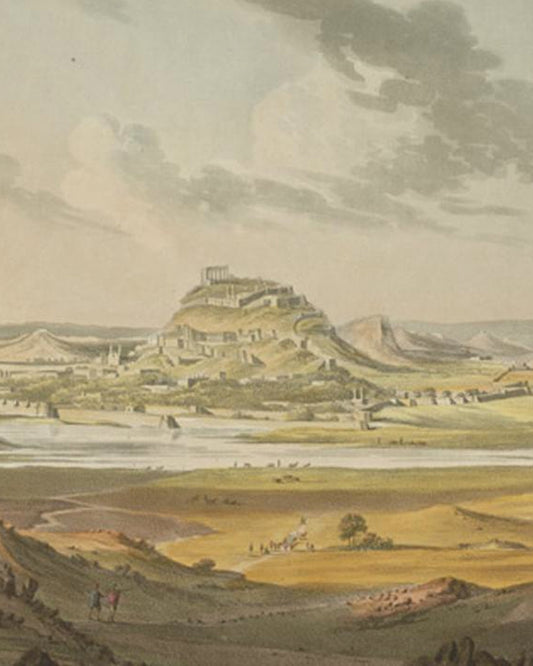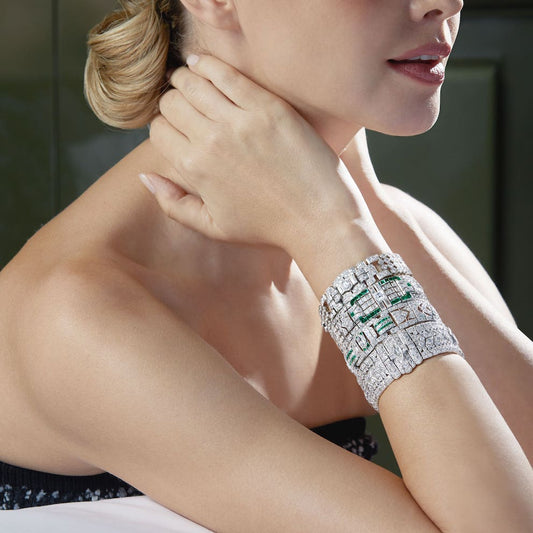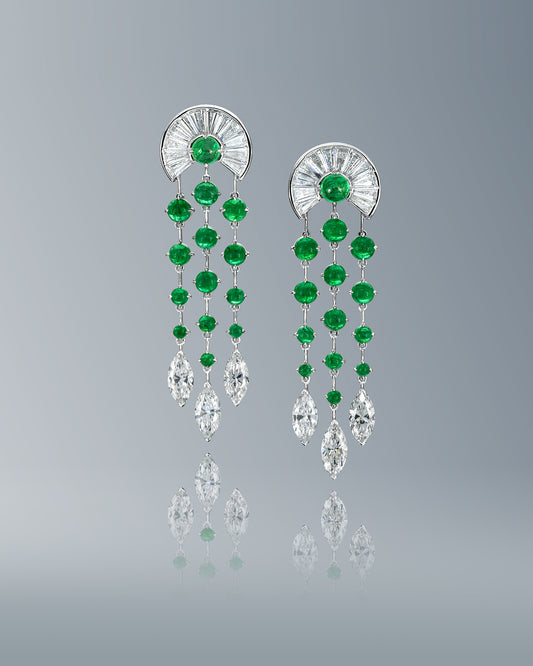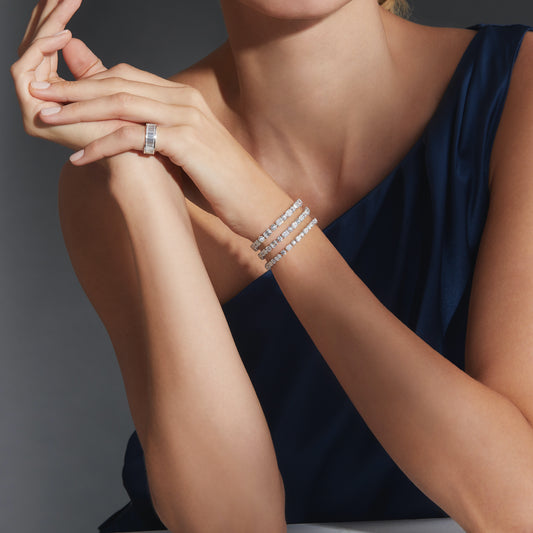The cufflink may have been designed as a simple method to fasten your cuffs, but the history of this accessory is as long as it is fascinating. What was once considered simply something practical has now gone far beyond the ornamental, to become an important sartorial statement. In fact, it's hard to find a man of influence today who doesn't wear a pair of fine or high jewellery cufflinks.
The shirt has been in existence since as early as 3000BC, but until the medieval era, it was worn as an undergarment. Eventually, the need to fasten shirts at the wrist emerged, so ribbon or string was used for practicality.
Fast forward to 17th century France and Louis XIV, who desired to have the biggest collection of jewels in the world. He began to wear diamond buttons fastened together with a simple chain; it is thought he had some 150 pairs of diamond "boutons de manchettes", literally 'cuff buttons'. This look was one quickly copied by his courtiers who were accustomed to using 'strass' or French Paste.
As time went on, these 'buttons' were created from precious metals, hard stones and a variety of gemstones, and often engraved with crests or coats of arms. As French fashion trends continued to spread throughout Europe, ornate and bejewelled cufflinks became a staple of royalty and high society.

Scallop shell cufflinks moulded from glass
Few early examples still exist. In London's British Museum, there is a collection of six pairs bequeathed by the botanist and collector Sir Hans Sloane. They are thought to have been from 1720 and feature beautiful scallop shells moulded from glass which are connected by a simple metal shank. All six are displayed on the original piece of parchment card.
The museum also has several gem set cufflinks from the era of the Mughal dynasty. The Louvre has in its archives a pair of cuff links from Napoleon’s reign in the early 1800s, which shows an orange hard stone, set in a copper alloy button with a small chain connecting to another plain metal button.
A century later, one of the world’s largest and most enviable cufflink collections belonged to Tsar Nicholas II. But as with almost all of the jewels belonging to the emperor they all disappeared - either having been broken up by the Bolsheviks or sold by them into private collections. All that remains of this collection is an album in which he annotated and painted images of more than 300 pairs of cufflinks.
It wasn’t until the turn of the twentieth century that cufflinks became a significant piece of jewellery and a must have accessory. Today, pieces from the Art Nouveau and Deco periods, when designs became as imaginative and impressive as women's jewellery, are highly prized. An example is an exceptional and rare pair of antique cufflinks from Ronald Abram’s extensive collection which once belonged to a notable, turn of the century entrepreneur and inventor. Featuring gold links and set with four black gem harlequin pattern opals weighing 20 carats, they date back to the mid 1920’s.
In terms of design, esteemed menswear expert, James Sherwood advises that every cufflink collection include, what he calls a "'Switzerland': a design of neutral simplicity that works with jeans, tweeds and black tie." This particular pair of high end cufflinks from Ronald Abram, set with diamonds, onyx and crystal, along with matching dress studs, works perfectly as day to night jewellery; sumptuous but simple enough to be worn with a pair of jeans and sneakers, and then transition to evening by adding the dress studs.
A symbol of style and sophistication

Cufflinks also appear throughout literature and on film, and often define the character of the person wearing them. Throughout the James Bond movies, the protagonist wears an array of elegant cufflinks. Right from the first scene of the first movie, Dr No, Sean Connery can be seen sporting a pair of square, gold cufflinks with engine turning, or guilloché, detail.
From ribbon and string to gold and gemstones, cufflink design has come a long way over the past five hundred years. Today, it’s not just a symbol of style and sophistication, it’s become an expression of personal identity. An accessory that’s both functional and beautiful in equal measure and in more than five centuries, has never gone out of style.
Bibliography
Jewelry for Gentlemen - James Sherwood. Thames & Hudson
Portrait Jewels - Diana Scarisbrick. Thames & Hudson
The Jewels of the Romanovs - Stefano Papi. Thames & Hudson
Websites and photographic credits
British Museum
The Louvre
The V&A Museum
